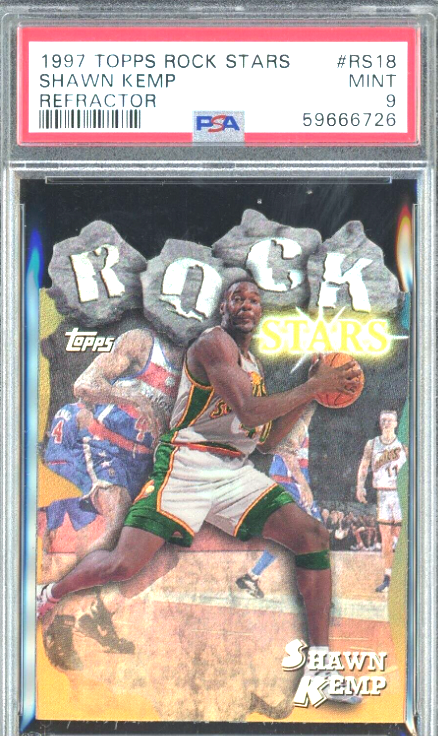Card grading is an integral part of the hobby for many collectors. Card grading involves evaluating a card’s condition, assigning it one of ten grades, and ensuring its long-term preservation in a protective case.
The Card Grading Scale consists of 10 levels: Gem Mint 10 (GEM MT 10), Mint 9 (Mint 9), Near Mint-Mint 8 (NM-MT 8), Near Mint 7 (NM 7), Excellent-Mint 6 (EX-MT 6), Excellent 5 (EX 5), Very Good-Excellent 4 (VG-EX 4), Very Good 3 (VG 3), Good 2 (GD 2) and Poor 1. Each grade can further be broken down into subranges such as NM/MT+ 8.5 and EX- 5.5. Card grading is typically assigned on a scale of 1 to 10, with Gem Mint 10 being the highest grade and Poor 1 the lowest.
Gem Mint 10 cards are considered to be virtually perfect in all areas, with no visible faults or damage, crisp edges, sharp corners, brilliant coloring and full original gloss.
Mint 9 is nearly perfect but may have very slight imperfections such as miniscule printing flaws or light scratches that can only be seen under intense magnification.
Near Mint-Mint 8 cards have minor defects such as small corner creases or slightly off-center printing. The card may also show aging due to being handled over time.
Near Mint 7 cards will have great visual appeal but may contain minor imperfections such as light surface wear, slightly rounded corners and/or a few faint scratches.
Excellent-Mint 6 cards are in good condition with slight wear on the edges or corners. These cards may also have very light surface wrinkles or printing defects that can be barely seen when viewed from an angle.
Excellent 5 cards are still considered collectible grade but may show visible signs of wear such as small creases, fraying on the edges and/or corner dings. The print quality is usually still fairly sharp though it may have some fading or discoloration due to age.
Very Good-Excellent 4 cards have seen a lot of handling and may have multiple corner dings, slight creases or discoloration on the image. The overall print quality is still good but it will not be as sharp as higher grade cards.
Very Good 3 cards are considered lower condition with noticeable signs of wear such as cleared off gloss, scuffing on the surface, multiple creases and/or dinged corners. These cards may also have some fading or discoloration due to age.
Good 2 cards are in poor condition with heavy wear on the edges and corners, multiple crease lines, scratches and/or dirt stains. Card images may be faded or barely visible due to extended exposure to light or harsh conditions.
Poor 1 cards are considered to be in the lowest grade and will have significant wear, markings or damage on the card. Card images may also be barely visible due to extended exposure to light or harsh conditions.
When grading a card, it is important to take into account factors such as condition, age, rarity and market demand. Card grading is often subjective so it’s best to consult with an experienced grader before assigning a grade. Card grades can have a significant impact on value so it’s important that each card is accurately graded for long-term preservation.
Card grading is an essential part of collecting and preserving cards for future generations of collectors. By understanding the 10 Card Grading Scale, you will be able to accurately assess the condition and value of your cards, assigning it one of ten grades, and ensuring its long-term preservation in a protective case. With the right knowledge and expertise, you can confidently maintain your card collection and make sure that your cards remain in pristine condition for years to come.

